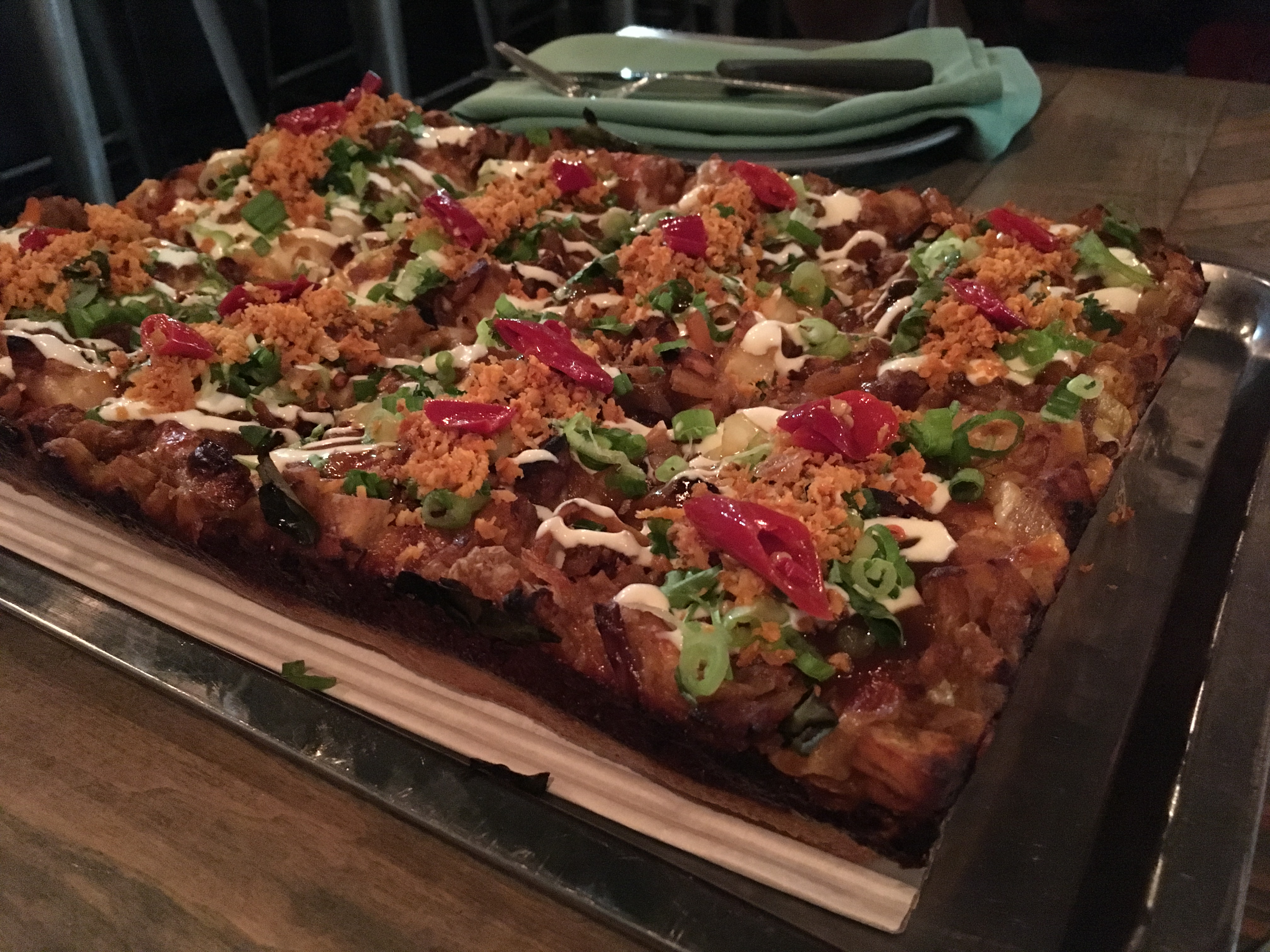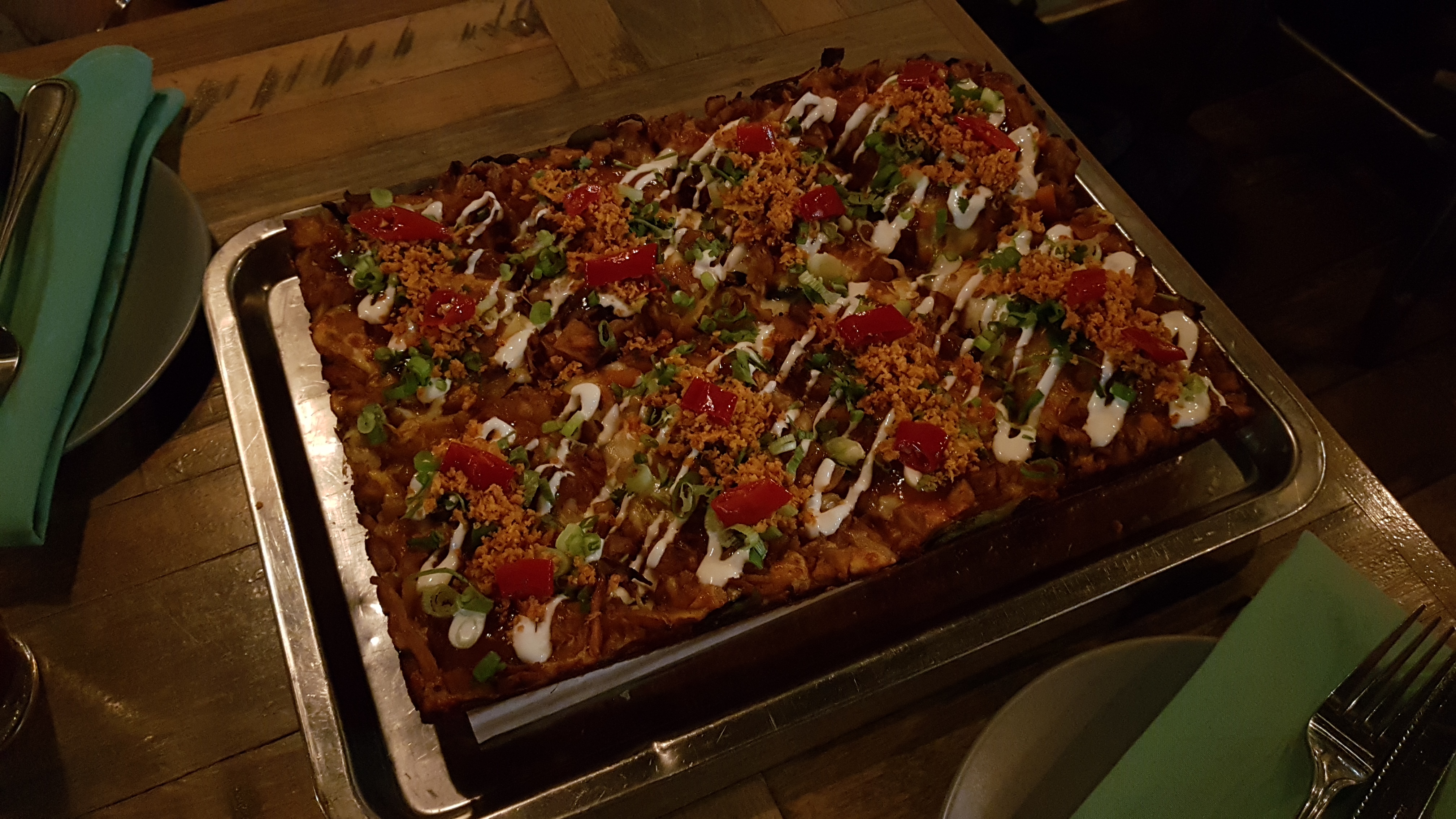I think there is a certain logic to New Yorkers being so exhaustingly fastidious about pizza. For one, there is so much of it there, and also, so much of it is dead simple. Simplicity makes comparison easier.
There’s a case to be made that that is actually what taste is—that what separates a film buff or a wine connoisseur from someone who just likes movies or booze isn’t snobbery or preciousness but is instead the decision to indulge in a thing, and then pay attention to difference. When you think of New York’s iconic dishes—pizza, lox and cream cheese on a bagel, cheesecake—New Yorkers’ borderline absurd debates over which is best all rest on subtle differences of texture, temperature, taste. The simple becomes iconic, the iconic becomes part of people’s identity, and then people debate which pizza is best until the heat death of the sun.
Those arguments are culture, though. This is the other side of taste: that how and why we talk about what’s good is what makes up the stuff of life—what else is there to talk about?
In Toronto we tend not to have those arguments. The city may be sprawling, its food scene now kaleidoscopic and overwhelming, but in a perfect microcosm of the country at large, there is little agreement about what constitutes an iconic Toronto dish.
Not that people don’t try. Though it initially began as an insult, Toronto is also known as Hogtown, partly a nod to the meat-processing plants that once dominated parts of the city, and there are many who’ll tell you that a peameal bacon sandwich (that’s back bacon, friends) is the quintessential Toronto snack. But it’s exactly what it sounds like: an attempt to retroactively create an iconic dish, substituting a convenient-sounding idea of history for the real thing. The peameal bacon sandwich isn’t any more popular or symbolic than anything else in the city.

I asked my friend Denise, a food lover and Globe and Mail columnist-reporter, about her thoughts, and she suggested that the one thing you can get here that’s rare elsewhere is Hakka, the fiery Indian-Chinese fusion cuisine. As an idea, I like it. Hakka mixes the styles of the two largest minority groups in the region, and it is easy to get here. It’s fitting. It reminds me, too, that just down the street from me is a place that sells Detroit-style pizzas, one variety of which includes kottu roti, the popular Sri Lankan dish of chopped-up meat and flatbread. It’s tempting to point to these moments of fusion as the perfect, premade symbols for one of the world’s most multicultural cities. Here we are, all blot and mixture, and kottu roti pizza is especially significant because Sri Lankan Canadians are heavily overrepresented in Toronto kitchens—so much so that many chain restaurants are starting to include Sri Lankan curries on their menus at the behest of the cooks who work there.
Yet, something about it still feels too neat, too pat. When I posed the same question to Chris Nuttall-Smith, former Toronto restaurant critic for the Globe, he suggested that we can’t agree on an iconic dish because there is no “we”—and that far from this being a bad thing, “maybe we should just shut up and eat and count our stars we don’t live in a city where everybody gets along.” It’s that other classic Canadian ideal: that we lack a clear identity or iconic things because we’ve risen above that pedestrian fluff.
Iconic dishes are part of those narratives about what a place is. Toronto doesn’t have a fixed version of that story yet. I’m more curious, though, about whether or not one is possible in a place like this, a city in which half its 3 million inhabitants were born somewhere else. Maybe the reason Toronto doesn’t have an iconic dish isn’t simply the lack of a clear narrative, but the impossibility of agreement—that deep down, cultures are rooted things, centuries-old systems, ways of seeing the world that often clash more than they mix. It’s nice to think about fusion food as a metaphor for mixture, but the truth is that cultures and cuisines are just as often like oil and water, occasionally irreconcilable, or at the very least doomed to stay separate—until one finds the right emulsifier, anyway.
But the search for that catalyst can be hard, and easily obscured. It is an unfortunate effect of our time that the sticky problems of multiculturalism have been overshadowed by the returning spectres of open bigotry and fascism. Instead of a discussion of what forming new cultures out of old ones might look like, we are instead mostly stuck with the pronouncements of bigots and, shortly after, the reaction of those who quite rightly shout them down. The messy arguments about cultural appropriation for example often descend into ridiculous, simplistic debates about who owns culture or the blindingly obvious fact that all culture is a product of fusion. The actual issues at hand never get discussed. You can talk about whether kottu roti pizza is a novel invention or an abomination, but it might help to first acknowledge that taste is a part of culture and that sometimes those parts fit and sometimes they don’t: that, say, curry leaves—ubiquitous in Sri Lankan cuisine and a distinctly acquired taste—aren’t universal, but instead, in a sign of how cuisine is firmly a product of culture, are about how small things fit into bigger things.
Figuring out what an iconic dish for Toronto might be is a process that would require us to argue over things—to think about what culture is, what is good, what is bad, and how we go about determining those things. Because it could be that we don’t know how to talk about the problem, because as of yet, we don’t even know what the right problem is—that maybe we keep looking for a mixture that cannot be instead of thinking about what might be truly new.






